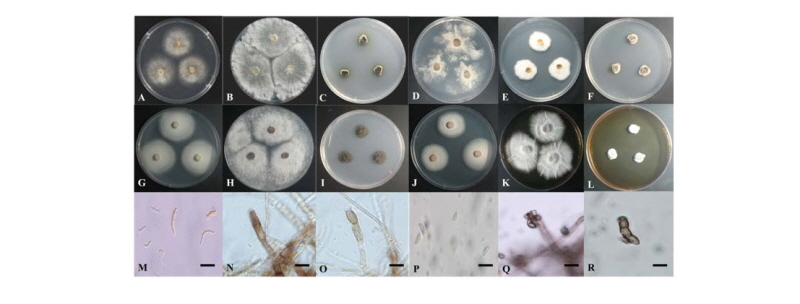Abstract
Endophytic fungi were isolated from the leaves of diverse plants inhabiting Jeju Island, Korea. The fungal isolates were identified through phylogenetic analyses incorporating nucleotide sequences derived from the internal transcribed spacer region, large subunit region of ribosomal DNA, and beta-tubulin gene. Our results identified six endophytic fungi previously unknown in Korea namely,
Acknowledgements
This study was supported by the Project on Survey and Discovery of Indigeous Fungal Species of Korea funded by NIBR of the Ministry of Environment and by the Project on conservation and Adaptation of Forest Species Vulnerable to Climate Changes funded by National Arboretum of Korea Forest Service.
Figures & Tables

Fig. 1. Colonies of strain P8 () grown for 7 days on PDA (A) and MEA (G), conidia (M). Colonies of strain 17E026 (i) grown for 7 days on PDA (B) and MEA (H). Colonies of strain 16H073 () grown for 7 days on PDA (C) and MEA (I), conidiophore and conidium (N, O). Colonies of strain 16H342 () grown for 7 days on PDA (D) and MEA (J). Colonies of strain 17E107 () grown for 7 days on PDA (E) and MEA (K), conidia (P). Colonies of strain 16H107 () grown for 7 days on PDA (F) and MEA (L), conidiophore and conidia (Q, R). PDA, potato dextrose agar; MEA, malt extract agar (scale bar = 10 μm).


